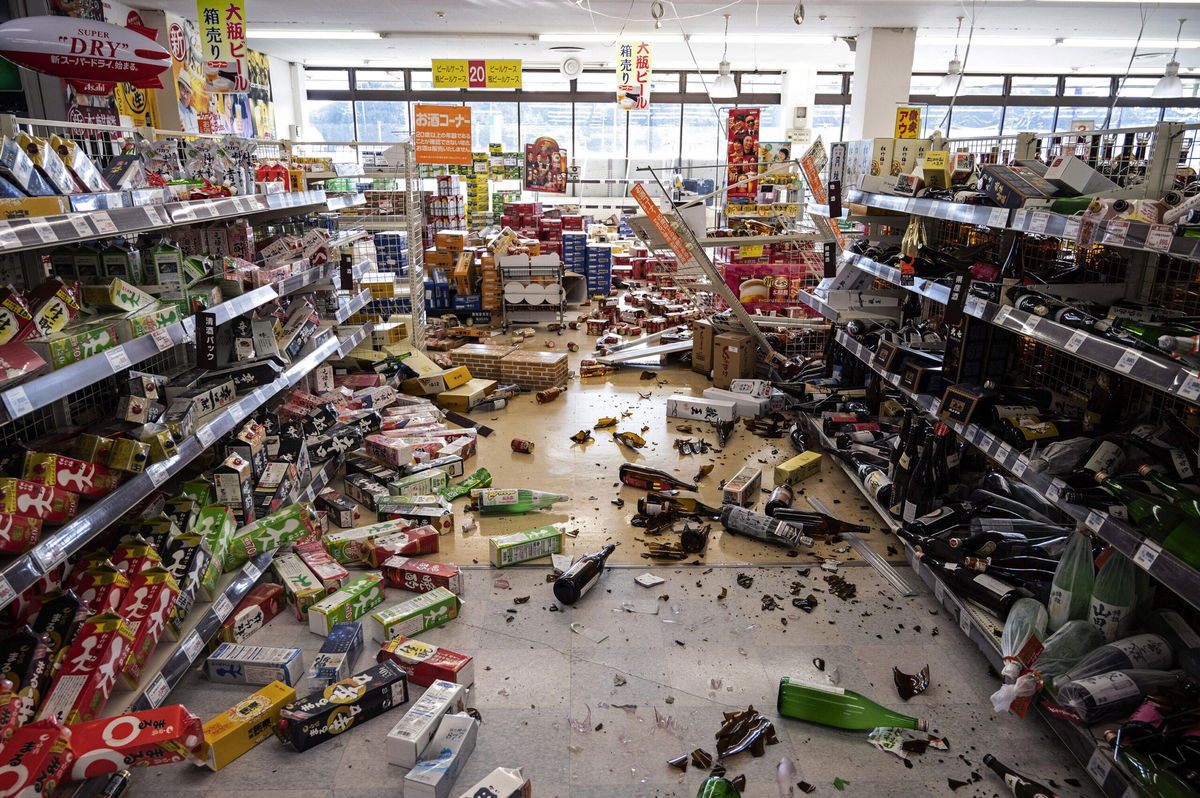What we know about the earthquake off Japan’s Fukushima coast

A supermarket littered with merchandise in Shiroishi
By Jessie Yeung and Emiko Jozuka, CNN
A deadly 7.4-magnitude earthquake struck off the coast of Japan’s Fukushima prefecture on Wednesday, injuring dozens of people.
For some, the incident brought back painful memories of 2011, when an earthquake triggered a tsunami causing a nuclear meltdown at the Fukushima power plant, a disaster that’s still being felt to this day.
Though the earthquake struck a similar area, Wednesday’s quake hasn’t prompted a national emergency — for a number of reasons.
Here’s what you need to know.
What, where, and when?
The quake hit around 12:30 a.m. local time (11:30 a.m. ET) off the coast of Fukushima, north of the capital Tokyo.
It was originally designated a 7.3-magnitude quake, but was upgraded to 7.4 on Thursday.
As of Thursday, all tsunami warnings issued after the quake have been lifted.
The epicenter of Wednesday’s earthquake was about 89 kilometers (55 miles) from the center of the devastating 2011 quake.
Robert Geller, a seismologist and professor emeritus at the University of Tokyo, suggested Wednesday’s quake could have been a 2011 aftershock. “In geological terms, aftershocks will persist for 50 to 100 years, but as time goes on, the frequency of aftershocks and their size will diminish,” he said.
Four people, including a man in his 60s, have been confirmed dead, and at least 160 others injured, Japanese authorities said Thursday.
Footage from the capital, Tokyo, show street lights and apartments shaking. Tens of thousands of households lost power across the city, but it was restored within a few hours.
No “abnormalities” had been detected in the country’s nuclear plants, Japanese Prime Minister Fumio Kishida said.
A bullet train traveling through Miyagi prefecture derailed during the quake, with 78 people trapped on board for four hours. All eventually escaped uninjured through an emergency exit, according to public broadcaster NHK.
Photos from Fukushima and Miyagi show buildings damaged by the quake, with windows shattered, roof tiles and flooring broken, and ceilings caved in. Merchandise and debris littered the floors of stores and supermarkets.
Wednesday’s quake happened off the coast, 37 miles (60 kilometers) deep — which might have limited the damage. The most damaging earthquakes happen close to the earth’s surface rather than deep in the crust, Geller said.
How does this compare to the 2011 quake?
The difference between Wednesday’s 7.4-magnitude quake and 2011’s 9.1-magnitude quake is staggering.
The 2011 quake was about 63 times stronger than Wednesday’s and released about 500 times more energy — the most powerful quake to ever hit Japan. And it was only 15.2 miles (26 kilometers) deep — meaning its impact was much greater.
While Wednesday’s earthquake caused tsunami waves just 8 inches (0.2 meters) high, the 2011 quake triggered 30-foot (9.1 meters) waves that damaged several nuclear reactors in the area.
The 2011 disaster left more than 22,000 dead or missing, from the initial earthquake, tsunami and post-disaster health conditions. As of last year, more than 35,000 people remained displaced, 10 years after the meltdown.
The cleanup is expected to last decades and cost billions of dollars.
Since 2011, Japan has stepped up its response systems to better deal with such disasters, including improving early earthquake warning systems and seismic observation technology.
Could more earthquakes or tsunamis come?
Japan’s Meteorological Agency warned the public to stay alert for aftershocks and the possible risk of mudslides or landslides. It also urged people in affected areas to stay away from the coast and not get into the sea.
In a tweet, the Prime Minister’s office said the government had established a countermeasure office that will work with local governments to carry out emergency measures including search and rescue of potential victims.
Geller, the seismologist, said Japan can expect more aftershocks in the next week that will gradually taper off.
Though he said there’s also a possibility that Wednesday’s quake was a “foreshock” before a larger earthquake, cautioning the chances of this happening are very low but “not zero.”
“Yesterday’s earthquake is a good reminder for people in Japan to remember that Japan is earthquake-prone and that earthquakes can strike at any time,” he said. “So people should be prepared.”
The-CNN-Wire
™ & © 2022 Cable News Network, Inc., a WarnerMedia Company. All rights reserved.